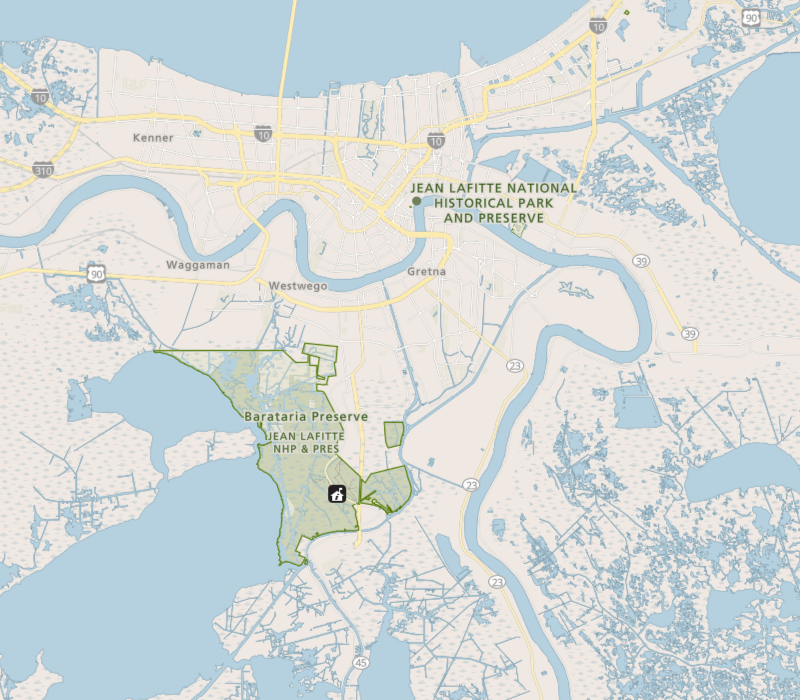
USGS Investigators: Hongqing Wang
NPS Investigators: Julie L. Whitbeck
| 2022 | 2023 | 2024 |
|---|---|---|
| $89,000 | $115,000 | $95,000 |
NPS Park: Jean Lafitte NHP & Pres
USGS Center: Wetland and Aquatic Research Center
States: LA
Studies indicate that construction of canals for oil and gas production across coastal Louisiana has been a major contributor to loss of wetlands and damage to ecosystem services such as fish and wildlife habitat, wind and wave energy attenuation, carbon sequestration, and preservation of water quantity and water quality. Water quality in Jean Lafitte National Historical Park and Preserve (JELA) waterbodies has been affected by human activities including agriculture, urban development, and wastewater treatment through the flow of freshwater with elevated nutrients into park canals. Additionally, the hydrology and vegetation community in the JELA are substantially affected by the operation of numerous man-made canals. Man-made canals and associated spoil banks curtail sheet flow resulting in both increased local flooding and desiccation of adjacent wetlands. Canals further degrade marshes by serving as a conduit for salt-water intrusion, eventually causing marsh conversion to open water. The removal of spoil banks and backfilling canals is a simple and cost-effective restoration approach to alleviate inundation and salinity stress to vegetated wetlands. Since 2001, JELA has removed spoil banks and backfilled canals within the JELA to restore natural hydrologic function and improve water quality.
Our primary objective is to provide JELA mangers with robust process-linked projections of water-quality outcomes of canal backfilling across the JELA landscape, under both current and future conditions. To accomplish this, we will 1) develop an innovative, high spatial resolution, process-driven coupled hydrodynamic and water quality modeling system for JELA’s Barataria Preserve; 2) assess and predict outcomes of a federally-funded canal backfilling restoration project on key JELA water-quality attributes; and 3) run this modeling system under a suite of well-founded climate change scenario conditions.
